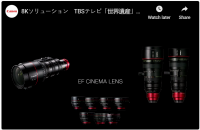1080p is more than good enough for YouTube because most people view YouTube videos on phones or basic laptops, not like us photography nerds with nice 4k monitors. I make videos for YouTube as my main hobby and I shoot everything in 1080p even though I have a 4k camera because the files are easier to manage. I get much faster export times and upload times in 1080p than what I would get with 4k. Maybe someday I'll update my computer and internet service to a point where it wouldn't make a difference in processing and uploading, but for now 1080p is more than good enough for what I do. I do local news stuff so getting it out there quickly is more important than absolute quality. Nobody wants yesterdays news even if it's in 4k. As far as I know all the broadcast TV in my area is still 720p or 1080i and will probably be for some time.
8k is really for cinematic stuff at this point, stuff like movies in the theater and high end streaming to people with 8k TVs. It also helps with flexibility in editing, but again that's for the cinematic type of productions who have no issue with money for storage capacity and processing power.
---
As a videographer that has been shooting since the 1980's on Betacam SP and am now using multi-screen 12K cameras (Blackmagic Ursa 12k), the issue that has been the bane of digital video production since the EARLIEST days of 1990's-era editing using the earliest Video Toaster, AVID, Flame/Inferno, Lightworks, DPS Velocity non-linear editors, etc is the CODEC that was used on those systems (i.e. Compression/Decompression Algorithms) which squeezes video information down to manageable playback rates.
It was once just Cinepak, RealVideo, MPEG-1/2, Motion JPEG and other poor quality codecs that STILL got used because non-linear editing was SO MUCH EASIER than using the tape-based Edit-Droid or a Multi-Reel 16mm/35mm/70mm splicer deck (been there done that!)
Nowadays, we have H.265, MPEG-4 and Motion Wavelet algorithms to help us keep video somewhat small and manageable. ...BUT.... the problem is that our video files have gotten larger in frame size and longer in length because in the old days I only shot video at a 10:1 or 20:1 ratio of 480i or 1080p captured video hours versus final edited master tape hours.
In 2020, I am shooting to fill-up as many CF cards and SSDs as I can stuff in my camera bag and vest pockets! This means I am sometimes shooting the equivalent of 500 hours per final edited hour as my shooting ratio! This means I need a HECK of a lot more storage space!
Now I do have a solution for BOTH capture and playback and that is a technology created/patented in 1987 by Iterated Systems called a Fractal Codec which offered FANTASTIC by even today's H.265 standards of video compression image quality and size.
Fractal Compression has/had the MAIN ISSUE of where the compression time versus decompression time was asymmetric where it took up to 100 minutes to compress one minute of 30 fps 1080p video back in the 1990's. This made Fractal Codecs a non-starter in the professional production environment but very viable for the old CD-ROM/DVD playback systems because the fractal codec was FAST to decode therefore compression time was a non-issue for those types of video products!
Even today's H.265 Wavelet-like 12:1 compression ratios per high quality Intraframe is FAR SURPASSED by the 50:1 intraframe (i.e. i-frame) compression ratio of a high quality Fractal codec!
See background of Fractal Codec:

en.wikipedia.org
Due to a recent turn of events and the addition of new software technologies, a new product launch is happening in first quarter 2021 that will allow us to bring the 1987-era Fractal Codec up to the modern day standard of 64-bit RGBA colour 1:1 synchronous compression vs decompression time that is demanded by modern video production and playback environments.
Numerous OTHER companies offer a set of hardware-assisted Fractal codecs BUT ONLY ONE now offers software-based 1:1 Fractal compression and decompression for 64-bit RGBA/YCbCrA/HSLA bitmaps starting from 24 fps up to 1000 fps at DCI 2K, DCI 4K, DCI 8K and even DCI 16K video frame resolutions!
The future of Hollywood Production-quality Local-machine and Internet-based Video Compression and Decompression is a Fractal CODEC and it's here TODAY!
V



